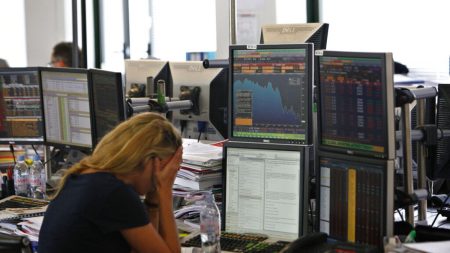Germany’s inflation rate surged to a surprising 2.6% in December 2024, significantly exceeding market expectations of 2.4% and reaching its highest level in 11 months. This resurgence in inflationary pressures presents a considerable challenge for policymakers at the European Central Bank (ECB) as they strive to maintain price stability within the Eurozone. The jump in inflation was broad-based, impacting various sectors, including services and food. While energy prices continued their downward trend, their decline decelerated, contributing to the overall inflationary pressure. Core inflation, which excludes volatile food and energy prices, also ticked up to 3.1%, indicating persistent underlying price pressures in the German economy. This rise in core inflation is particularly concerning as it suggests that inflationary forces are not merely driven by transient factors but are becoming more embedded within the economic system. The harmonized index of consumer prices (HICP), used for comparison across Eurozone countries, painted a similar picture, rising to 2.9% year-on-year, significantly above the 2.6% forecast. These figures underscore the difficulty the ECB faces in achieving its 2% inflation target.
This unexpected surge in inflation triggered immediate reactions across financial markets. German government bond yields climbed, reflecting investor concerns about persistent inflation. The benchmark 10-year Bund yield rose to 2.45%, its highest level since early November, while the shorter-term two-year Schatz yield also increased. The rise in yields signals investors’ reduced expectations for aggressive interest rate cuts by the ECB in the near future. As inflation climbed, the euro strengthened by 1.3% against the US dollar, exceeding $1.04. This appreciation of the euro was further bolstered by a report in the Washington Post suggesting a potential softening of the US administration’s stance on universal tariffs, easing concerns about trade disruptions.
European equity markets responded positively to both the easing tariff concerns and the stronger euro. The Euro Stoxx 50 index surged by 1.6%, with notable gains in major European markets. The French CAC 40 rose by 1.5%, propelled by strong performance in luxury and industrial stocks. Luxury goods companies like Hermès, LVMH, and Kering benefited from the anticipation of fewer trade barriers, while industrial stocks also saw gains. Similarly, Italy’s FTSE MIB index climbed 1.2%, with Stellantis leading the charge, benefiting from the positive outlook for the automotive sector.
The German DAX index also experienced a significant uptick, rising by 0.9%, primarily driven by gains in automotive stocks. Companies like Porsche AG and Daimler Truck Holding AG saw their share prices soar over 6%. Other major German automakers, including BMW, Mercedes-Benz AG, and Volkswagen, also experienced substantial gains, with their shares rising by 5.6%, 4.4%, and 4% respectively. These gains in the automotive sector reflect investor optimism regarding the potential easing of US tariff policies, which would be beneficial for the export-oriented German auto industry.
The December inflation figures for Germany precede the release of Eurozone-wide inflation data. Economists anticipate a rise in annual inflation across the Eurozone to 2.4% in December, up from 2.2% in November. Core inflation for the bloc is expected to remain stable at 2.7%, highlighting the persistent challenge facing the ECB in its efforts to bring inflation down to the 2% target. The German data adds pressure on the ECB to address the rising inflationary pressures while balancing the need to support economic growth.
The upward trend in inflation across the Eurozone, mirrored by Germany’s December figures, presents a complex challenge for the ECB. Balancing the mandate of price stability with supporting economic growth requires careful consideration of monetary policy adjustments. The rising inflation, coupled with the potential for softening US trade policies, creates a dynamic environment for European markets, with potential implications for investor sentiment, currency fluctuations, and overall economic performance. The ECB’s response to these evolving economic conditions will be crucial in shaping the economic trajectory of the Eurozone in the coming months.














